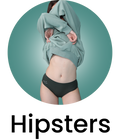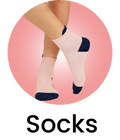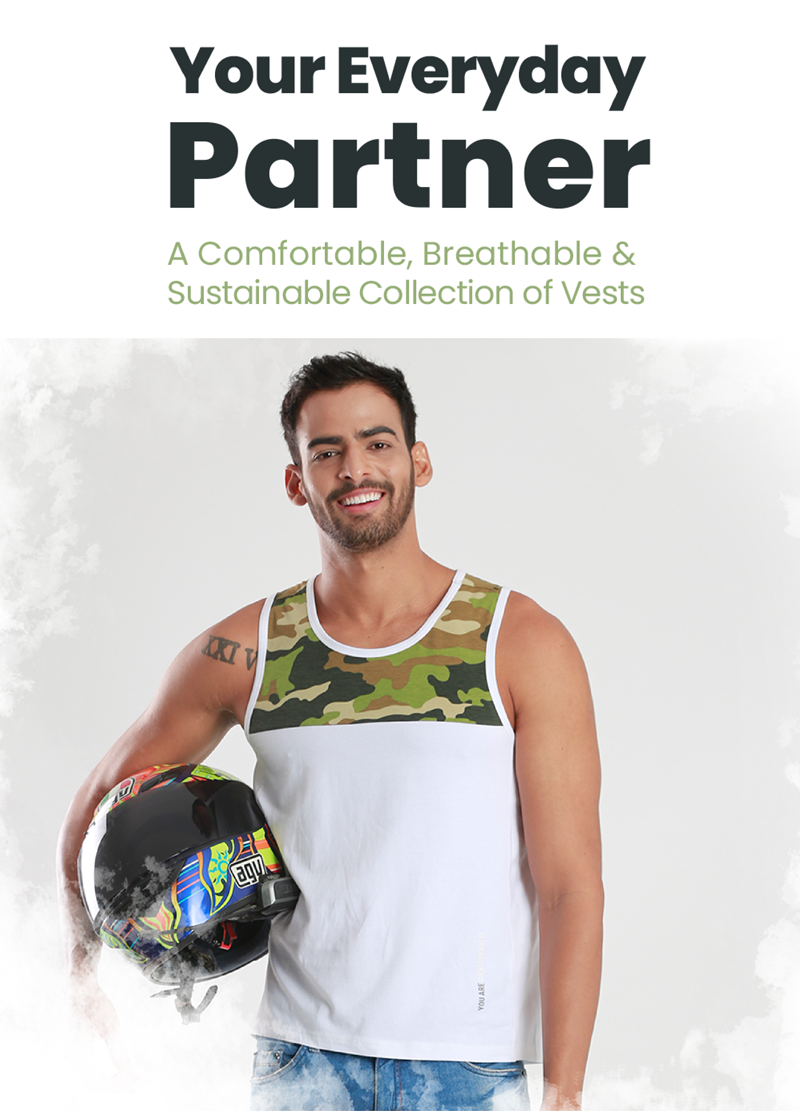Tired of restrictive workout gear hindering your performance? The limitations of traditional athletic wear become acutely apparent as training intensity increases, particularly concerning moisture management and range of motion. Enter active vests engineered for optimal breathability and unrestricted movement. These aren't your bulky, outdated vests; we're talking about lightweight, form-fitting designs utilising advanced moisture-wicking fabrics like micro-polyester blends and strategic ventilation zones. Imagine pushing your limits without the discomfort of sweat buildup or the feeling of being confined. This exploration delves into the science behind these performance-enhancing vests, examining how their construction and material properties contribute to a superior training experience, ultimately allowing you to achieve peak performance with unparalleled comfort.

Understanding Moisture-Wicking Technology
Moisture-wicking fabrics are engineered to draw sweat away from the skin and transport it to the outer layer of the fabric, where it can evaporate more easily. This process helps keep the wearer dry and comfortable, especially during strenuous activities. The key to this technology lies in the fabric's structure and the properties of the fibers used.
How it Works:
-
Capillary Action: Moisture-wicking fabrics utilize capillary action, where liquids are drawn through narrow spaces due to the forces of adhesion, cohesion. Surface tension. In fabrics, these narrow spaces are created by the spaces between the fibers.
-
Hydrophobic and Hydrophilic Fibers: Many moisture-wicking fabrics use a combination of hydrophobic (water-repelling) and hydrophilic (water-attracting) fibers. Hydrophobic fibers, like polyester and polypropylene, don't absorb moisture but allow it to pass through. Hydrophilic fibers, like cotton or rayon (in some blends), absorb moisture and draw it outwards.
-
Surface Area: The increased surface area of specially designed fibers enhances evaporation. Fibers with grooves or channels increase the surface area, allowing moisture to spread out and evaporate faster.
Common Materials Used:
-
Polyester: A synthetic fiber known for its durability, wrinkle resistance. Excellent moisture-wicking properties.
-
Polypropylene: Another synthetic fiber that is lightweight, hydrophobic. Quick-drying.
-
Nylon: Strong and elastic, nylon offers good moisture-wicking capabilities when treated with special finishes.
-
Merino Wool: A natural fiber that can absorb moisture and release it slowly, providing insulation and comfort. While not as quick-drying as synthetics, merino wool has natural odor-resistant properties.
The Science Behind Enhanced Mobility in Active Vests
An active vest's mobility is determined by its design, materials. Construction. A well-designed active vest will allow a full range of motion without restricting movement. The following elements contribute to enhanced mobility:
Key Design Elements:
-
Ergonomic Cut: Active vests are often designed with an ergonomic cut, which means they are shaped to follow the natural contours of the body. This allows for a snug fit without restricting movement.
-
Strategic Seam Placement: Seams can create friction and restrict movement. Active vests often use flatlock seams, which are sewn flat to the fabric to minimize chafing and increase comfort. Seams are also strategically placed away from high-movement areas.
-
Stretch Panels: The incorporation of stretch panels, often made from spandex or elastane, in key areas like the back, sides. Shoulders, allows for a greater range of motion.

Material Selection for Flexibility:
-
Spandex (Elastane/Lycra): Known for its exceptional elasticity, spandex is often blended with other fibers to provide stretch and recovery.
-
Knit Fabrics: Knit fabrics, as opposed to woven fabrics, generally offer more stretch and flexibility due to their looped structure.
-
Four-Way Stretch Fabrics: These fabrics stretch in both directions, providing maximum freedom of movement.
Construction Techniques:
-
Articulated Design: Articulated elbows and shoulders mimic the natural bend of the joints, allowing for a more comfortable and unrestricted range of motion.
-
Gussets: Gussets are triangular or diamond-shaped pieces of fabric inserted into seams to add reinforcement and increase the range of motion. They are commonly used in the underarm and crotch areas.
Active Vest Components: A Comparative Look
Active vests can incorporate various components to enhance their functionality and performance. Here's a comparison of some common elements:
|
Component |
Description |
Pros |
Cons |
Common Use Cases |
|
Insulation |
Layer that traps air to provide warmth. |
Provides warmth in cold conditions. |
Can add bulk and reduce breathability. |
Hiking, skiing, snowboarding in cold weather. |
|
Wind Resistance |
Fabrics that block wind to prevent chilling. |
Protects against wind chill. |
May reduce breathability. |
Cycling, running, sailing in windy conditions. |
|
Water Resistance/Repellency |
Fabrics treated to resist or repel water. |
Keeps the wearer dry in light rain or snow. |
Not fully waterproof; may wet out in heavy rain. |
Hiking, running, commuting in light rain. |
|
Reflective Elements |
Materials that reflect light for increased visibility. |
Enhances safety in low-light conditions. |
Adds minimal weight or bulk. |
Running, cycling, walking at night or in poor visibility. |
|
Pockets |
Storage compartments for carrying essentials. |
Provides convenient storage for items like phones, keys. Snacks. |
Can add bulk and weight. |
Running, hiking, travel. |
Real-World Applications and Use Cases
Active vests with moisture-wicking and enhanced mobility features are beneficial in a wide range of activities and professions:
-
Running and Trail Running: Runners benefit from the moisture-wicking properties, which keep them dry and comfortable, preventing chafing and overheating. The enhanced mobility allows for a full range of motion, improving performance.
-
Cycling: Cyclists need clothing that allows for unrestricted movement and wicks away sweat. Active vests can provide core warmth without limiting arm movement.
-
Hiking and Backpacking: Hikers and backpackers need clothing that can handle varying weather conditions and levels of exertion. Moisture-wicking and mobile active vests are ideal for layering and regulating body temperature.
-
CrossFit and Training: These activities require a full range of motion and can generate a lot of sweat. Active vests provide the necessary mobility and moisture management.
-
Construction and Outdoor Work: Workers in physically demanding jobs benefit from clothing that allows them to move freely and stays dry. Active vests can provide added warmth and protection without hindering their work.
-
Law Enforcement and Security: Active vests that integrate with tactical gear provide enhanced mobility and comfort for officers on duty. Moisture wicking helps regulate body temperature during periods of high exertion or prolonged wear. Learn more about tactical gear integration.
Maintenance and Care for Longevity
To ensure your active vest continues to perform optimally, proper maintenance and care are essential. Here are some guidelines:
-
Read the Care Label: Always follow the manufacturer's instructions on the care label.
-
Washing: Machine wash in cold water with a mild detergent. Avoid using bleach or fabric softeners, as they can damage the fibers and reduce the moisture-wicking properties.
-
Drying: Tumble dry on low heat or hang to dry. Avoid high heat, as it can damage the fibers and cause shrinkage.
-
Storage: Store your active vest in a cool, dry place. Avoid storing it in direct sunlight or in damp conditions.
-
Avoid Abrasive Surfaces: Be mindful of abrasive surfaces that can snag or damage the fabric.
Conclusion
Taking the leap into active vests that prioritize moisture-wicking and enhanced mobility isn't just about upgrading your gear; it's about unlocking your potential. Consider this: I remember struggling through a particularly grueling hike, weighed down by a bulky, sweat-soaked vest. The difference after switching to a lightweight, breathable option was night and day! Embrace this change. You'll find yourself moving more freely and comfortably, regardless of the activity. The future of athletic wear is undoubtedly heading towards even greater personalization and integration with technology. To stay ahead, explore vests with smart fabrics that monitor your performance or incorporate adjustable ventilation systems. Your next step? Test out a few different styles to find the perfect fit and feel for your body and training regimen. Remember, the best vest is the one that disappears on your body, allowing you to focus solely on achieving your goals. Go out there, push your limits. Experience the difference firsthand.
FAQs
So, what exactly makes an active vest 'active' anyway?
Good question! It's really about the features that help you perform better during physical activity. Think lightweight materials, excellent moisture-wicking (to keep you dry). A design that allows for a full range of motion. , it's designed to not hold you back.
Moisture-wicking... Does that actually work, or is it just marketing fluff?
Honestly, it does work. The effectiveness can vary. Good moisture-wicking fabrics pull sweat away from your skin, allowing it to evaporate more quickly. This helps you stay cooler and drier, which is a huge benefit, especially during intense workouts or in hot weather. Look for vests made with synthetic fabrics like polyester or nylon for the best results.
Enhanced mobility – how is that achieved in a vest?
It's all about the design and materials! Active vests often use stretchy fabrics and strategic paneling. Think about armholes that are cut to allow for a full swing. Fabrics that move with you, not against you. Some even have articulated shoulders for even greater freedom.
Can I wear an active vest for, like, any activity, or are they better suited for certain things?
You can wear them for pretty much anything! But they really shine in activities where you sweat a lot or need that extra layer without overheating. Think running, hiking, gym workouts, cycling... Anything where breathability and freedom of movement are key.
How do I wash an active vest to keep it in good shape?
That depends on the specific fabric, so always check the care label first! Generally, you'll want to machine wash it cold with similar colors. Avoid using bleach or fabric softeners, as these can damage the moisture-wicking properties. Tumble dry on low or, even better, hang it up to dry.
Are active vests only for warm weather? What about colder conditions?
While they're great in warmer weather, you can totally use them as a base layer in colder conditions. The moisture-wicking properties will still keep you dry and comfortable. You can layer a jacket or fleece over it for extra warmth. Just make sure the vest isn't too bulky if you plan to layer!
What kind of fit should I look for? Snug? Loose? Somewhere in between?
It's mostly personal preference! A snug fit can help with moisture-wicking and prevent the vest from flapping around during high-intensity activities. A looser fit allows for more airflow and can be more comfortable for casual wear or layering. Consider the type of activity you'll be doing most and choose accordingly.




